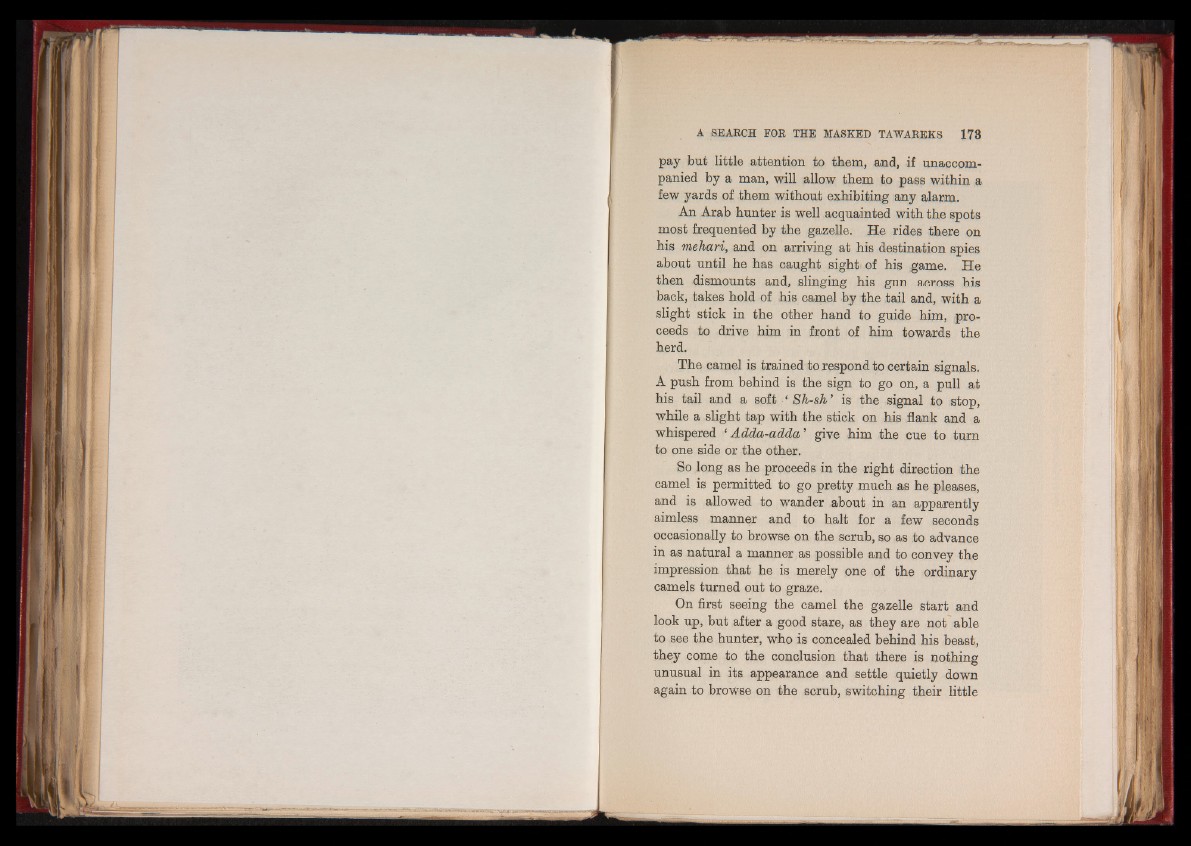
pay but little attention to them, and, if unaccompanied
by a man, will allow them to pass within a
few yards of them without exhibiting any alarm.
An Arab hunter is well acquainted with the spots
most frequented by the gazelle. He rides there on
his mehari, and on arriving at his destination spies
about until he has caught sight of his game. He
then dismounts and, slinging his gun across his
back, takes hold of his camel by the tail and, with a
slight stick in the other hand to guide him, proceeds
to drive him in front of him towards the
herd.T
he camel is trained to respond to certain signals.
A push from behind is the sign to go on, a pull at
his tail and a soft ‘ Sh-sh’ is the signal to stop,
while a slight tap with the stick on his flank and a
whispered ‘ Adda-adda' give him the cue to turn
to one side or the other.
So long as he proceeds in the right direction the
camel is permitted to go pretty much as he pleases,
and is allowed to wander about in an apparently
aimless manner and to halt for a few seconds
occasionally to browse on the scrub, so as to advance
in as natural a manner as possible and to convey the
impression that he is merely one of the ordinary
camels turned out to graze.
On first seeing the camel the gazelle start and
look up, but after a good stare, as they are not able
to see the hunter, who is concealed behind his beast,
they come to the conclusion that there is nothing
unusual in its appearance and settle quietly down
again to browse on the scrub, switching their little